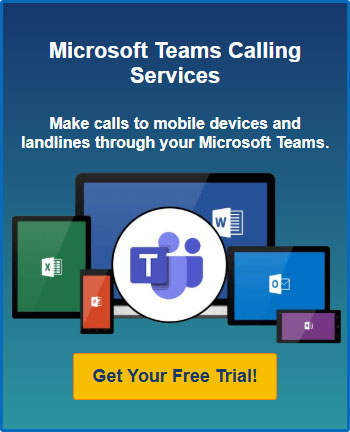Plan Your Microsoft Teams Upgrade
Posted on May 22, 2023 by Fusion Connect
Upgrading to Microsoft Teams can greatly improve team collaboration and productivity. In this blog, we provide expert tips and strategies on how to plan and execute a successful upgrade, ensuring a smooth transition for your team.

Upgrading to Teams: What to Expect and How to Prepare
To prepare for upgrading to Microsoft Teams, you should start by identifying pain points and opportunities for improvement in your current collaboration tool or process. From there, you must assess your organization’s readiness and capacity for change, and then determine which Teams features and functionalities are most relevant and beneficial for your organization.
When upgrading to Teams, identify and allocate necessary resources which include project management, IT support, and end-user training. You should also establish clear communication channels and expectations with stakeholders throughout your migration process.
Once you have upgraded to Teams, you can expect enhanced collaboration and communication, a centralized platform for all team communications, and a more streamlined and efficient workflow for team projects and tasks. There will be potential challenges you face as users adapt to the new platform, especially if they are transitioning from a different collaboration tool.
How to Upgrade to Microsoft Teams: A Comprehensive Guide
Upgrading to Microsoft Teams is a critical step for organizations looking to enhance their collaboration, communication, and productivity. Whether you are starting from scratch or transitioning from an existing collaboration tool, this guide will help you plan, execute, and monitor your Teams upgrade with confidence.
Assess Your Current Collaboration Tools and Needs
Start by identifying the current tools you use for collaboration and communication. Analyze the effectiveness and limitations of these tools. Finally, determine what your business needs are for collaboration and communication.
Create a Migration Plan and Timeline
You should set a target date for completing your migration. Then, develop a timeline with key milestones and deadlines. It is important to plan for contingencies and potential issues that may arise.
Prepare Your Organization for the Upgrade
Communicate the upcoming change to your team and stakeholders. You should provide them with information on the benefits of Microsoft Teams. Lastly, you should ensure that you offer training and support to your team to ensure a smooth transition.
Configure Teams Settings and Policies
You should determine which features and functionalities you would like to either enable or disable. From there, you will need to customize your Teams settings to align with your organization’s policies and overall culture. Next, establish security and compliance policies that are appropriate for your organization.
Train Your Team on Using Microsoft Teams
Offer your team a range of training materials and formats, including video tutorials, live training sessions, and quick reference guides. By providing ongoing training, you will help users stay up to date with new features and functionality. It is recommended that you encourage feedback and questions from users to continuously improve your training and support.
Monitor and Measure Adoption and Success
Using analytics and user feedback, track usage and adoption of Microsoft Teams. Next, identify and address any challenges or barriers to adoption. Finally, measure your ROI of the Teams upgrade, including improvements in collaboration, productivity, and communication within your organization.
The Benefits of Upgrading to Microsoft Teams for Your Business
Teams offers a centralized platform for all team communications, with features such as chat, video conferencing, and document sharing. This can lead to increased productivity, faster decision-making, and better teamwork.
With Teams being available on multiple devices and platforms, it makes it easier for teams to collaborate from anywhere. This flexibility can benefit remote and distributed teams.
By integrating with other Microsoft apps and third-party tools, Teams allows for a more efficient and streamlined workflow for team projects and tasks. This can reduce time spent switching between tools and systems.
Teams is included in most Microsoft 365 plans, so there are no additional costs for upgrading. Additionally, the platform’s enhanced collaboration and productivity features can lead to cost savings over time by reducing the need for other tools or services.
References:
Microsoft Teams Upgrade Planning Workshops
Upgrade from Microsoft Teams Free (classic) to Microsoft Teams



